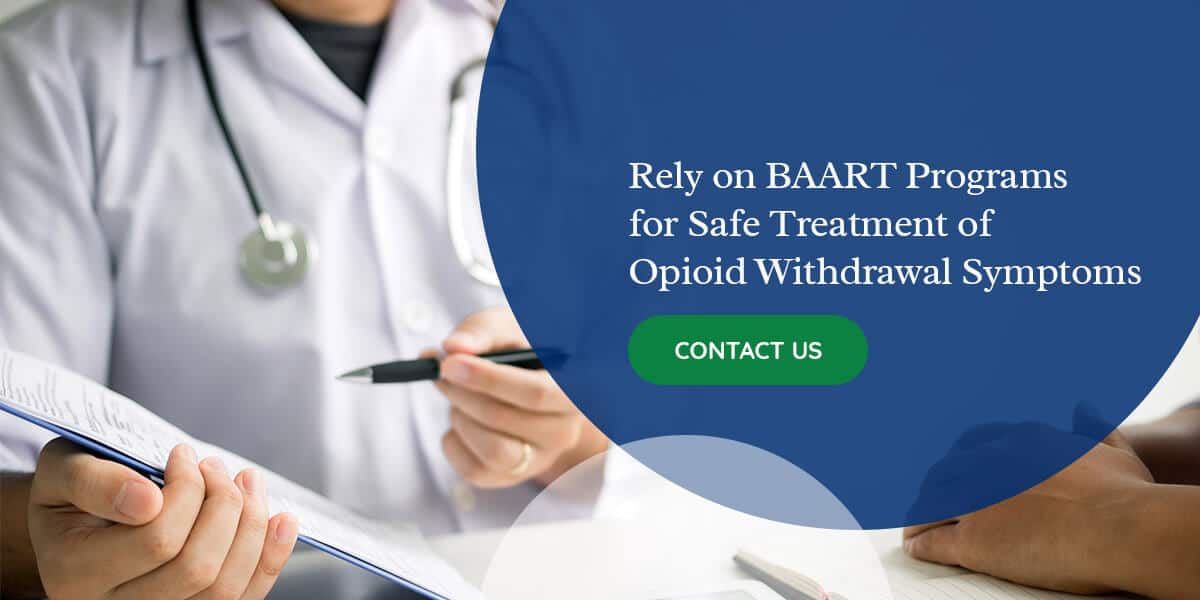Generally, you will need to wait at least 12-24 hours after opioid use to begin treating withdrawal symptoms with Suboxone®.
The kind of opioids used — whether short-acting like heroin or long-acting like methadone — will determine how much time you need to wait until you begin taking Suboxone® to treat withdrawal symptoms.
For example, a short-acting opioid leaves your system more quickly than a long-acting one. So, you may not need to wait as long to begin treatment with Suboxone®. Certain long-acting opioids like morphine, oxycodone and fentanyl may require you to wait up to 48 hours or longer before using Suboxone®.
Always speak with your doctor so they can recommend a course of action based on the kind of opioid used and when it was last used.
Why Do I Have to Wait to Take Suboxone®?
Suboxone® is a dissolvable film medication and a combination of two drugs: buprenorphine and naloxone. Buprenorphine is a partial opioid agonist, and naloxone is an opioid antagonist. In other words, buprenorphine occupies the brain’s opioid receptors to relieve or eliminate debilitating opioid withdrawal symptoms. Naxolone, the opioid antagonist, is added to deter misuse of buprenorphine.
Waiting before taking Suboxone® is crucial. If you begin using the medication before experiencing opioid withdrawal symptoms, you may experience precipitated withdrawal. Precipitated withdrawal occurs when certain medicines — including naxolone — cause sudden and severe physical or psychological reactions. Whereas spontaneous withdrawal is gradual, precipitated withdrawal happens quickly.
Symptoms of precipitated withdrawal can last for hours or a day, and they can include:
- Nausea
- Diarrhea
- Vomiting
- Chills
- Headaches
The length of precipitated withdrawal symptoms may depend on several factors, including the patient’s history of opioid use and general health.
Rely on BAART Programs for Safe Treatment of Opioid Withdrawal Symptoms
If you are experiencing precipitated withdrawal, reach out to your doctor immediately to discuss treatment options. Even if Suboxone® or buprenorphine caused your precipitated withdrawal symptoms, it might also be able to reverse them.
You’re never alone on your journey to recovery from opioid use disorder (OUD). Our nationwide team at BAART Programs has empowered individuals to find their unique road to recovery through medication-assisted treatment (MAT) programs, counseling and other forms of personalized care for more than 40 years.
Whether you have questions about withdrawal symptoms or are ready to begin the road to recovery, start by finding one of our nearest medication-assisted treatment clinics or contacting us today.




